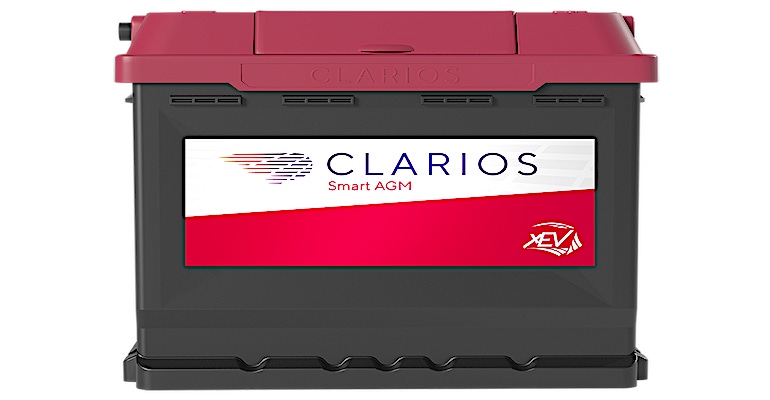Clarios Readies Smart AGM Battery
Affordable absorbent gas mat (AGM) 12-volt batteries will provide reliable power for EVs’ computer and ADAS systems.

While the lithium-ion traction batteries that propel electric vehicles understandably draw most of the attention, EVs also employ traditional 12-volt batteries too, and just as with combustion vehicles, if that 12-v battery is dead, an EV can’t start even if the lithium-ion pack is fully charged.
That’s because the 12-v battery runs the computers that control the EV’s drivetrain. Because the 12-v battery serves such a crucial role, carmakers are increasingly interested in better batteries for that job, according to Mark Wallace, president and CEO of Clarios, the world’s largest manufacturer of 12-v batteries.
Clarios is the name of the company, but it is known for its retail replacement battery brand, Optima. Also, Clarios is the manufacturer of DieHard batteries, which were originally sold by Sears and are now sold by Advance Auto. The company builds one-third of the world’s 12-volt automotive batteries.
Those batteries have traditionally been flooded lead-acid batteries, but EV makers’ increased interest in better batteries for their electric cars is pushing the industry toward absorbent gas mat (AGM) lead-acid batteries for that role.
Lithium-ion batteries could also be used for these 12-v batteries, but AGM batteries can provide the same kind of dependability when equipped with the same kind of battery management system developed for lithium-ion batteries. “With lithium-ion batteries you have to have that management software, and we’ve backward-integrated that into lead-acid batteries to monitor individual cells,” Wallace explained.
This precise management contributes to the improved reliability of AGM 12-v batteries in EVs, along with some inherent advantages in its design when compared to traditional flooded batteries.
“The Clarios Smart AGM will be a game-changer for the industry, providing a reliable safety-critical battery with real-time communications,” Wallace said. “It combines the proven reliability, inherent safe chemistry and sustainability of AGM with the real-time intelligence of our Smart technology.”
While the sulfuric acid in a flooded lead-acid battery is suspended in water, in an AGM battery that acid is absorbed into a fiberglass mat that can be either packed flat into a rectangular battery case like a common flooded lead-acid car battery, or it can be wound in a cylindrical cell.
According to Battery University, AGM batteries can be discharged to a level of 20 percent state of charge safely. In comparison, flooded batteries can only be discharged to 50 percent to preserve the same cycle life. Naturally, AGM batteries cost more than flooded batteries, but they are much cheaper than lithium-ion batteries.
Also, significantly they don’t require the hard-to-get materials used in lithium-ion batteries. Lead-acid batteries are nearly all recycled, so the necessary materials to make the next one come back when a new battery goes into service. “The lead-acid battery is probably the most recycled product in the world,” said Wallace. “It is a closed-loop network, with 8,000 batteries an hour being recycled.”
Clarios cites the advantage of superior functional safety performance to support vehicle reliability offering real-time communications that:
Identify potential issues in the battery before they happen
Provide emergency power critical for EV and autonomous vehicles
Anticipate required maintenance or replacement
Optimize the performance of low-voltage power supply
Clarios says that it will begin limited production of Smart AGM batteries later this year, with full production starting in 2024.
About the Author(s)
You May Also Like



.jpg?width=300&auto=webp&quality=80&disable=upscale)

